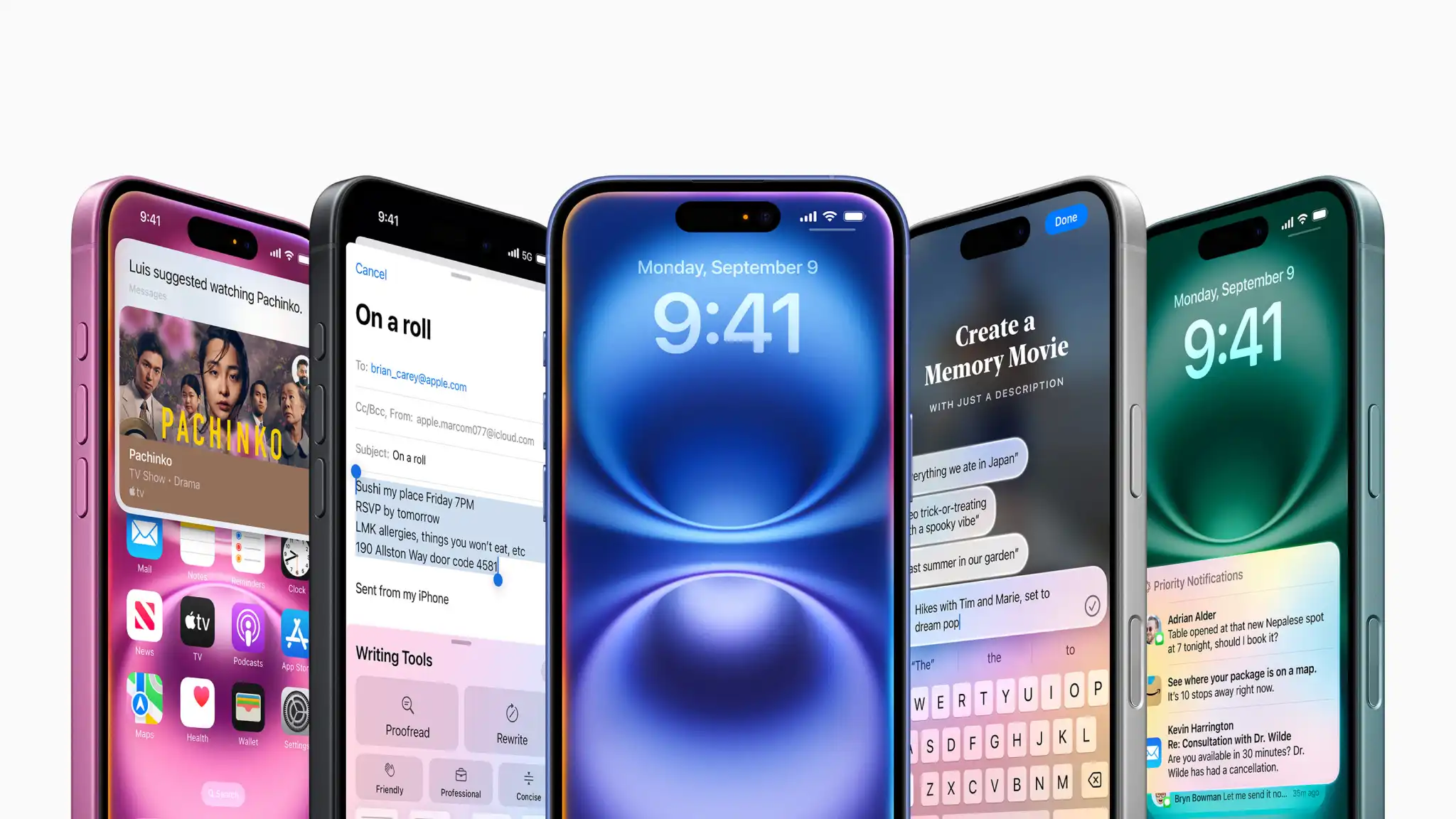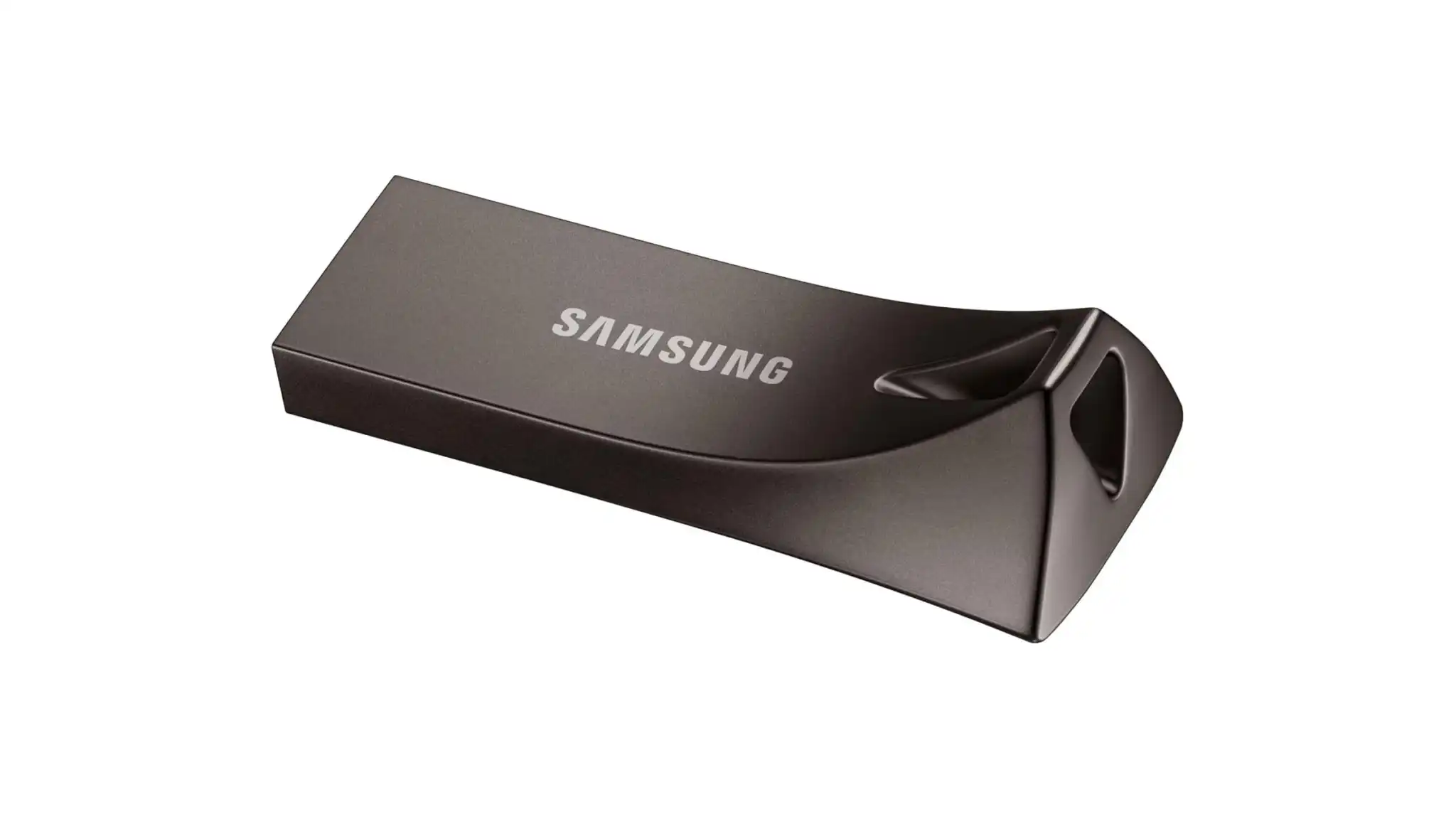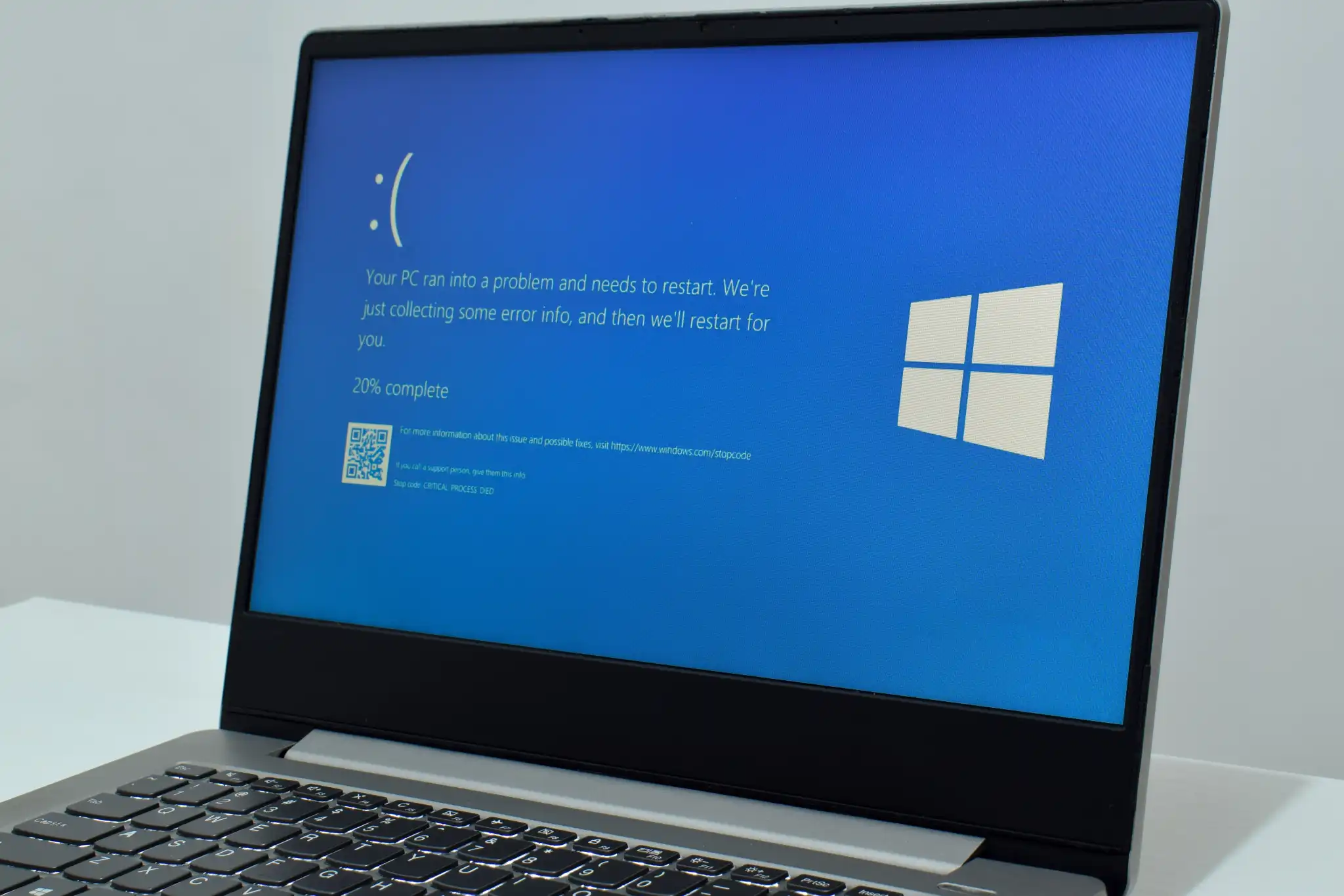Your next iPhone will be smarter than ever, like it or not
The annual iPhone event in Apple Park took place today, with the team finally lifting the lid on the iPhone 16 series.
As good as the iPhone 15 range is, there’s definitely still room for improvement. Apple has absolutely nailed some aspects of the iPhone, yet it still falls behind Android competition in other areas, especially when it comes to AI features.
So, understandably, many people are excited for the next iteration of the iPhone, which will soon be available to buy. If that includes you, here’s everything you need to know about it.
When will the iPhone 16 be released?
Apple launched the next iPhone on 9 September 2024 at the Steve Jobs Theater in Apple Park. The new phones were revealed alongside the Apple Watch Series 10 and new AirPods.
Pre-orders for these devices will roll out from Friday 13 September, with the first wave of releases hitting shelves the following week on Friday 20 September 2024.
How much does the iPhone 16 cost?
Here are the launch prices for the iPhone 16 range:
- iPhone 16 (128GB) – $799/£799
- iPhone 16 Plus (128GB) – $899/£899
- iPhone 16 Pro (128GB) – $999/£999
- iPhone 16 Pro Max (256GB) – $1,199/£1,199
These are the same prices as the previous iPhone 15 range – leaker yeux1122 on South Korean platform Naver suggests that the titanium frame on the iPhone 16 models was cheaper to produce, which could be why there’s been no major price increases.
The phones will be available in 128GB, 256GB, 512GB, and storage sizes, with the usual 1TB option for the Pro variants.
What specs and features does the iPhone 16 have?
Apple is going big on AI this generation, with supporting software enhancements for its photo editing, productivity tools and voice assistant. Other headline features include major changes to the camera button, more unique colours and bigger battery lives.
There are four smartphones to choose from in the iPhone 16 series – here’s the lowdown:
Design
Let’s start with the regular iPhone 16 and 16 Plus.
These phones come in a choice of five colours: White, Black, Ultramarine, Teal and Pink – the last three are new additions. These are made from Aerospace Aluminium and have IP68 water resistance and dust resistance, the same protection seen on the Pro phones.

Apple
As predicted in leaks, Apple has opted for a vertical camera arrangement set into a pill-shaped bump for the 16 and 16 Plus iPhones.
This design pays homage to previous iPhone models, notably the iPhone X, which also featured a pill-shaped camera design with a slim module. Although the iPhone 12 also employed a vertical camera setup, it had a broader square bump to accommodate the flash and microphone.
This camera bump incorporates two distinctive camera rings for the wide and ultrawide lenses, without altering the position of the flash or the camera lenses in this latest iteration.
The Capture Button is now new pressure-sensitive, and has been rebranded to ‘Camera Control’. As well as opening and snapping shots, users can slide their finger along the button to control the zoom, focus and more. Plus, a long press of this button will now record video.
The mute button has now been replaced with the Action Button, which was previously exclusive to the iPhone 15 Pro range and not on the regular models. This can turn the phone to silent, open apps, activate the torch and more.

Apple
Speaking of which, the iPhone 16 Pro and Pro Max have also had some design tweaks. As well as the usual Black Titanium, White Titanium and Natural Titanium finishes, there’s a new bronze colour, called Desert Titanium. The textured glass back of the phone has a slightly softer tone than that on the chassis.
The camera module trio shape remains the same as the previous iteration, and the Pro models also support the new Camera Control features. These phones also have the thinnest border of any product from Apple, according to the keynote.
The Pro and Pro Max are made from Grade 5 Titanium, which should be more resistant to scratches. Here are the dimensions for each phone:
- iPhone 16 – 147.6 x 71.6 x 7.8mm, 170g
- iPhone 16 Plus – 160.9 x 77.8 x 7.8mm, 199g
- iPhone 16 Pro – 149.6 x 71.5 x 8.25mm, 199g
- iPhone 16 Pro Max – 163 x 77.6 x 8.25mm, 227g
Display
There are no size changes for the regular iPhone 16 and 16 Plus, with these devices retaining the same dimensions as their predecessor – 6.1-inches for the regular and 6.7-inches for the Plus, with resolutions of 2556 x 1179 and 2769 x 1290 respectively at 460 ppi.
However, the iPhone 16 Pro and Pro Max feature larger, OLED Super Retina XDR displays. The iPhone 16 Pro sports a display measuring 6.3-inches, while the iPhone 16 Pro Max boasts a 6.9-inch display. This is the largest of any display on an iPhone so far.
The iPhone 16 Pro has a resolution of 2622 x 1206, while the Pro Max has a 2868 x 1320 panel, both at 460 ppi. All phones can reach up to 2,000 nits peak brightness.
The iPhone 16 Pro and 16 Pro Max also have the thinnest screen bezels ever seen on an Apple device. Exact dimensions were not confirmed, but Chinese leaker (via GSMArena) and Ice Universe reported 1.2mm on the iPhone 16 Pro and 1.15mm on the Pro Max.
For comparison, the current iPhone 15 Pro’s bezels are 1.71mm and iPhone 15 Pro Max’s are 1.55mm. These advancements make the iPhone 16 range closer to a truly ‘bezel-less’ design.
All panels in the range have Ceramic Shield protection, which Apple claims is twice as durable as glass. There were however no mentions of new panel technologies, so it’s assumed these are the same as the ones on the iPhone 15 range. The Pro phones will have an adaptive 120Hz refresh rate for gaming.

There was speculation that Apple will move its Face ID sensors under the display, but this wasn’t confirmed during the keynote – 9to5Mac suggests this won’t happen until after 2026.
There’s also no indication that Apple will follow the lead of many Android phones and introduce an under-display fingerprint sensor.
Performance
When Apple introduced the new 3nm processor for the iPhone 15 Pro models, it also changed the name of the chip, from the A17 Bionic to the A17 Pro.
The new name indicated that this was a special version of the chip for the Pro models, leading us to assume that the iPhone 16 would get a stripped-down version of the chip called the A17 Bionic.
However, Apple surprised us by confirming that the iPhone 16 and 16 Plus would instead get the A18, while the Pro range would get the A18 Pro.
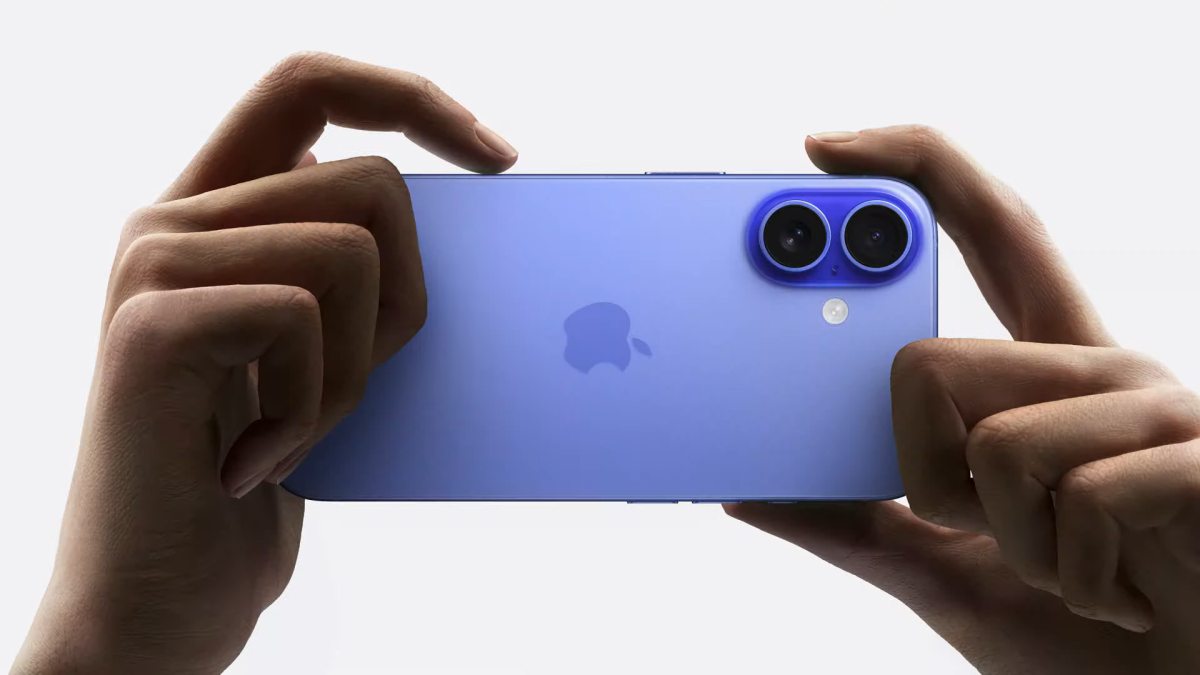
Apple
The A18 has a 16-core neural engine, which is designed for all the upcoming AI features on the smartphone. There’s a 6-core CPU which is 30 percent faster than the A16 Bionic (the chip in iPhone 15), and a 5-core GPU for improved graphics – useful for gamers.
Meanwhile, the A18 Pro will make the iPhone 16 Pro and Pro Max 15 percent faster than the previous generation equivalents, with a 6-core GPU and a 6-core CPU with 2 performance cores and 4 efficiency cores.
Cameras
Apple has included a new 48Mp ultrawide lens on the iPhone 16 Pro and Pro Max – a substantial improvement over the previous 12Mp. Like the 48Mp main, it will probably use pixel binning (where four pixels are combined into one) for 12Mp images by default. This has a ƒ/2.2 aperture and 120° field of view.
Both iPhone 15 Pro models will get upgraded 12Mp telephoto cameras offering 5x optical zoom, with up to 25x digital zoom. Meanwhile, the main 48Mp camera seems to have the same specs as its predecessor, only with the rebranded ‘Fusion’ name, meaning that the telephoto capabilities can be used with the main camera.
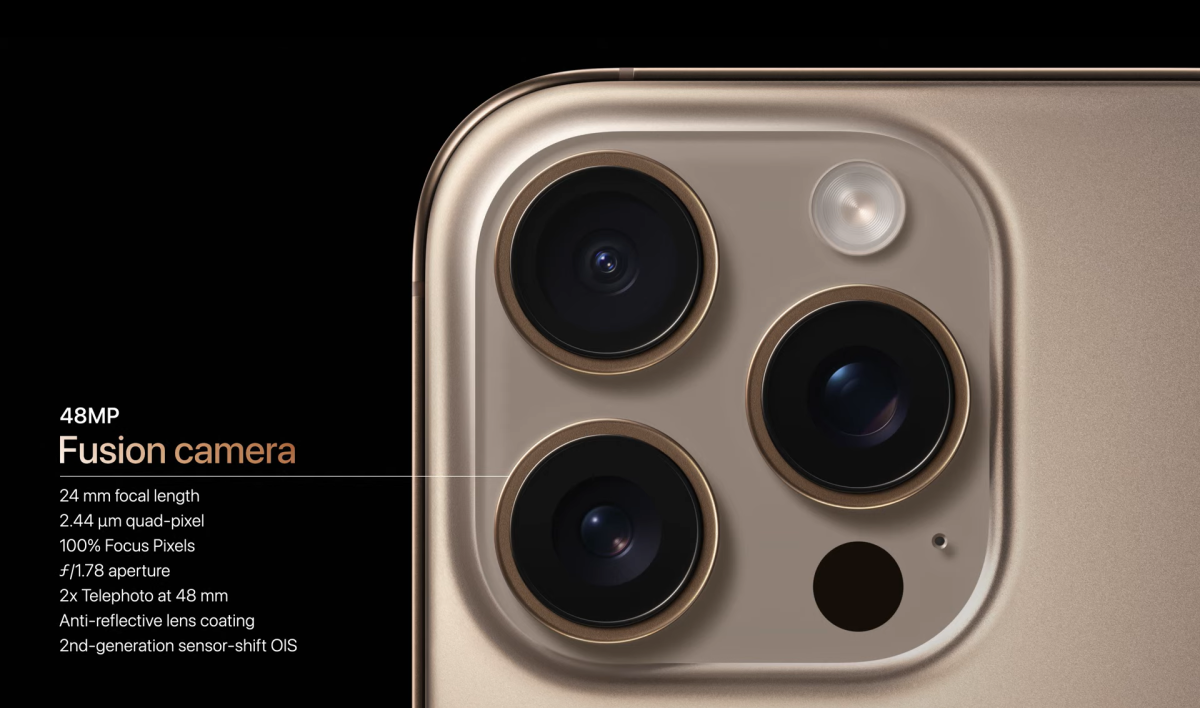
Macworld
The iPhone 16 and 16 Plus will feature two vertically aligned cameras, including a 48Mp primary camera with 2x telephoto zoom and an improved 12Mp ultrawide lens with autofocus, as well as an ƒ/2.2 aperture, enhancing low-light performance. These non-Pro models will also support macro photography for the first time.
The new vertical design on the regular models also allows them to support spatial videos. The Pro models will support 4K video at 120fps with Dolby Vision and provide users with further control over sound with the Audio Mix feature to alter the different levels of background noise.
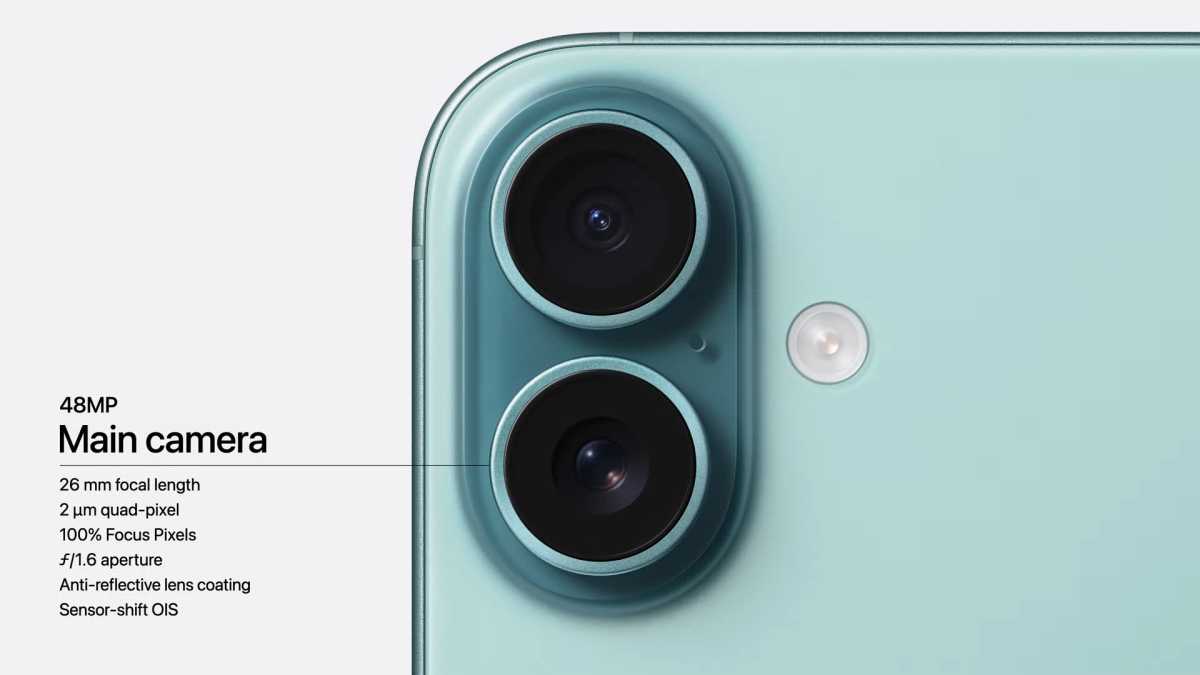
Apple
As mentioned, all iPhone 16 models include the new pressure-sensitive Camera Control, inspired by Sony, which uses trackpad-like gestures for zooming and other functions.
Apple also mentioned that background object removal will be coming for editing, similar to Google’s Magic Eraser.
Battery & charging
The iPhone 16 models offer higher prolonged lifespans – in fact, Apple claims that the iPhone 16 Pro Max has the best battery life of any iPhone, period.
Apple has not disclosed the battery sizes at the time of writing, but it states on its website that the iPhone 16 can last up to 18 hours of streaming playback, while the Plus can withstand 24 hours.
Meanwhile, the iPhone 16 Pro can stream video for up to 22 hours, while the Pro Max can last a whopping 29 hours of Netflix and chill.
Software
For all the software announcements from Apple’s WWDC event, have a look at our iOS 18 round-up.
The most anticipated feature is access to Apple Intelligence. However, the new phones will initially lack Apple’s AI feature, which will arrive a month later via a software update in the US. UK users will have to wait until December for the new features.
The AI software is kept private and secure by being run through Private Cloud Compute, meaning users can use many features that are on-device and not shared via the Cloud – though some actions will still use Apple servers. Apple also committed to this security being independently verified by experts regularly.

YouTube / Apple
Apple Intelligence features include brief suggested replies in Messages and Mail, a Reduce Interruptions Focus mode that selectively allows urgent notifications and a Safari Reader Mode that summarises web pages. Writing Tools offer professional or friendly text adjustments and proofreading, while another feature records and transcribes calls.
Improvements to Siri include the voice assistant being able to process false starts in language, and allowing users the option to use Siri via text rather than through the microphone.
Users can generate their own emojis, and see improved search functions in their photo and video libraries. The camera can also be used like Google Lens, so users can get information on something by taking a photo.
Apple Intelligence positions Apple against competitors like Google Gemini, OpenAI’s ChatGPT, and Microsoft’s Copilot.
Of course, the usual safety features will be integrated into these phones – including Emergency SOS via satellite, Crash Detection and Roadside Assistance via satellite.
Connectivity
Apple transitioned to USB-C technology starting with the iPhone 15 lineup, and that’s continuing on the iPhone 16 models.
Although Apple has been developing its in-house 5G modem chips, they aren’t ready for 2024 phones. However, the iPhone 16 range will feature Wi-Fi 7 technology.
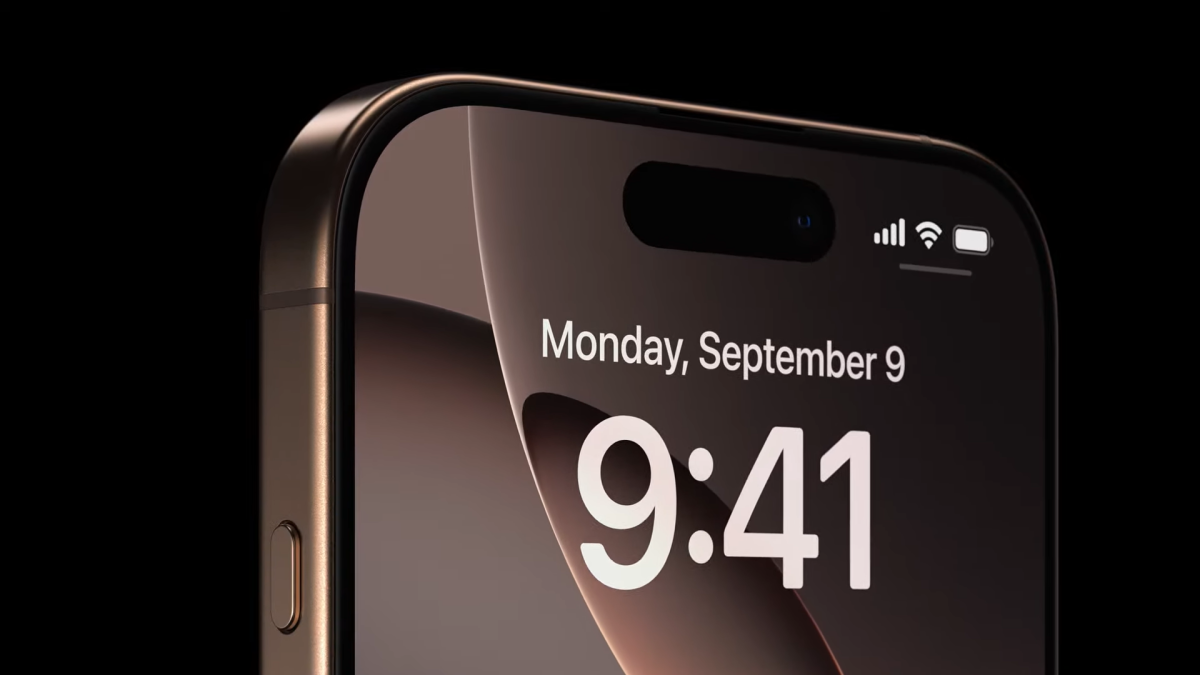
Apple
Apple’s AR/VR headset, the Vision Pro, is now on sale. We’re expecting the company to do its best to integrate it seamlessly into the ecosystem, and the iPhone 16 series will probably be a gateway for this.
iPhone 16 Ultra
One of the more interesting rumours that was circulating even around the iPhone 15 launch was the possibility of yet another model, called the iPhone 15 (or now 16) Ultra.
However, this smartphone has still failed to materialise.
It is supposed to be even more expensive than the current lineup, but in exchange, customers would get a slew of upgrades. It’s been speculated to feature an upgraded, faster variant of any chip we’ve seen before (presumably with more GPU cores), a bigger screen, and possibly even a portless design.
That’s all the information we have about iPhone 16. In the meantime, be sure to read about the upcoming iPhone SE 4 and check out the best iPhones you can buy right now.

